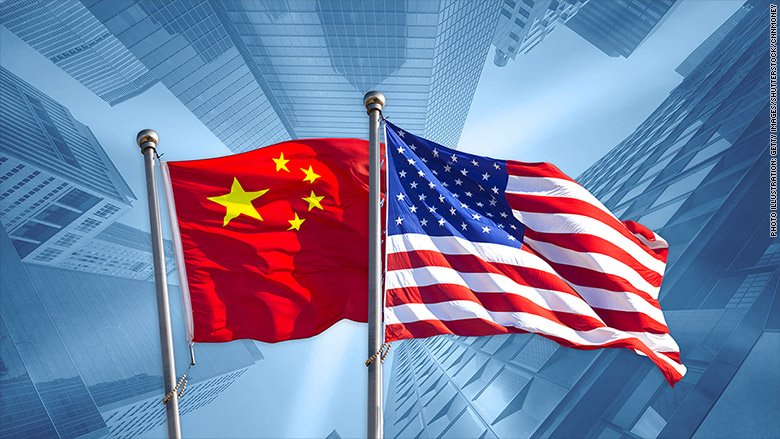US limits Chinese investment in tech
June 26, 2018 | Expert Insights

Amid escalating trade tensions, the US is drafting regulations to curb firms with over 25% Chinese ownership from investing in US companies with “industrially significant technology.”
US claims the measure is in light of “national security concerns.”
Background
The United States and China are two of the largest economies in the world. Each considers the other as a partner in trade and an adversary in geopolitics. US President Donald Trump has previously been a critic of China. He blamed the country for loss of jobs within the US and has often criticized the US trade deficit with China. China's trade surplus with the United States widened in 2017 while total foreign trade volume maintained rapid growth.
While China started investing around the world in the early 2000s, the first waves of Chinese overseas investment targeted mostly extractive mining activities in developing countries and resource-rich advanced economies such as Australia and Canada. Over the past five years, however, Chinese capital has begun to flow into non-extractive sectors in advanced economies, increasingly targeting technology and innovation-intensive industries. In the first quarter of 2014 alone, Chinese investors announced high-tech deals worth more than $6 billion, including the takeovers of Motorola Mobility, IBM’s x86 server unit, and electric carmaker Fisker.
“US-China bilateral trade investment ties are integrated with global supply chains. So, a US-China trade war is necessarily going to have an effect on companies and consumers in other countries,” said Scott Kennedy, an expert on Chinese economic policy at the Center for Strategic and International Studies in Washington.
China has released a new plan called “Made in China 2025” which has a primary objective to make the country a global competitor in an array of industries, including semiconductors, robotics and electric vehicles. China is spending heavily to both innovate and buy up technology from abroad. China defends Made in China 2025 as necessary for its economic survival. It still depends on other countries for crucial goods like chips and software, and China is offering funding for homegrown labs for entrepreneurs who hope to grab a piece of the future.
Analysis
US complaints over China misappropriating US technology through joint venture rules and other policies have resulted in tariffs on $34 billion worth of Chinese goods. The first round of duties will be imposed on 6th July.
The US tariff list mainly focuses on technology and electrical products, for which the value-added share in China is relatively low. Collateral damage to other economies in the global supply chain (especially north Asian economies) could be larger than for China and the United States in the near term.
The Wall Street Journal stated that the US Commerce Department and National Security Council were proposing “enhanced” export controls to keep technologies central to developing “Made in China 2025” industrial plan from being shipped to China. A government official said the Treasury would invoke the International Emergency Economic Powers Act of 1977 (IEEPA) to devise the restrictions. This act empowers the office of the president to restrict assets based on national security concerns. It was earlier invoked after the 2001 September 11 attacks in US.
The looming trade war has already hit supply chain-dependent Asian markets which have hit 6-month lows. The direct impact on the macro economy could still be manageable. Even after accounting for the second-round effect on employment, investment, and consumption, a 25% tariff on all of China’s exports to the US would cause GDP growth to slow by around 0.5 points.
A report published by the Asia Society and Rhodium Group finds that Chinese investment is increasingly targeting US high tech sectors. Annual investment has topped $1 billion since 2010, and 2014 is poised to be a breakthrough year, with transactions of over $6 billion announced in the first quarter.
The report also identifies three potential roadblocks for a productive US-China investment relationship: the politicization and abuse of legitimate national security concerns on both sides for protectionist or other special interests; and concerns about the “unfair advantages” enjoyed by Chinese firms in global competition, including lax IP protection, industrial policy, and a strong domestic-first approach to high-tech sectors.
It can be expected that in the environment of growing trade tensions, China and US may cripple their economies in defense of their plans for progress. According to Haibin Zhu, chief China economist and head of China equity strategy at J.P. Morgan, “From an economic perspective, a trade war would be a “lose-lose scenario” and negotiation is the preferred approach. We cannot rule out that the US hardline announcement could be a bargaining strategy. There is still room for negotiation.”
Counterpoint
Chinese development plans such as Made in China 2025, Internet+, and the 13th Five-Year Plan emphasize the development of smart- and internet-based technology, which carry an implicit recognition of the benefits of global information networks. However, regulations in the financial and healthcare sectors, as well as standards related to cloud computing, prohibit the flow of certain data across China’s borders, thereby limiting the effectiveness of national development plans.
Assessment
Our assessment is that US protectionist measures are more likely to damage the global economy instead of enhancing US industries. We believe that the externality of these policies will be borne mainly by the technology sector which is driven by foreign investment and joint opportunities.








Comments